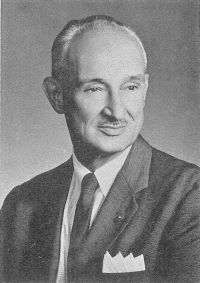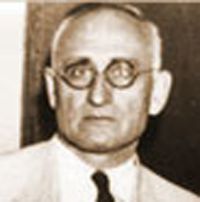Our Conservation History
The MWCD was created to carry out a comprehensive flood control and water conservation project in the Muskingum River Watershed. Ninety years later, the MWCD continues the work of its forefathers, to protect and conserve the watershed’s natural resources for responsible use and enjoyment.
In March 1913, the Muskingum River Watershed experienced one of the worst floods on record. The devastation from that flood became the catalyst for the formation of the Muskingum Watershed Conservancy District (MWCD).
The first significant investment in the region came as a result of a contract between the United States of America and the MWCD signed March 29, 1934. The federal government allocated to the U.S. Army Corps of Engineers (USACE) the sum of $22,090,000 to construct 14 dams and reservoirs in the watersheds of three main tributaries of the Muskingum River: the Walhonding River, the Tuscarawas River, and the Wills Creek.
The dams constructed in each of these basins created the 14 reservoirs we enjoy today, but they serve a far greater purpose.
In response to the March 1913 storm, the system of dams and reservoirs was designed so that the reservoirs could be filled to the height of the spillways, with a total five-day rainfall 36 percent larger than the magnitude of the March 1913 storm. At maximum flood elevation, approximately 77,730 acres would be used to hold water and lower flood stages, thereby providing flood protection for communities and properties below the dams.
With the passage of the Flood Control Act of 1939, the federal government confirmed its commitment to be primarily responsible for flood control operations in the MWCD. The Act specifically authorized the transfer of ownership of the 14 dams to the United States to be operated by the USACE. MWCD has remained responsible for the operation and maintenance of the reservoir areas under its ownership and control. The USACE, with the cooperation of the MWCD, has operated the dams in accordance with its Comprehensive Ohio River Flood Control Plan and its Water Control Manuals.
Since the construction of the system of reservoirs and dams, the USACE estimates that $10 billion worth of potential damage from flooding has been saved in the Muskingum River Watershed.


Key Events in the Creation and
Ongoing Improvements of the MWCD
Key Events in the Creation and Ongoing Improvements of the MWCD
Recent Conservation Efforts, Improvements, and Agreements
2000s
In 2004, the MWCD received a $3.8 million planning loan from the Ohio Water Development Authority to prepare a plan for the collection and use of funds for the maintenance and enhancement of water resources in the district. The following year, the Conservancy Court recognized an amendment to the Official Plan approved by the Board of Directors that allowed funds to be collected through an assessment of property owners in the Muskingum River Watershed according to Ohio law. Funds collected support maintenance and rehabilitation projects at the dams as well as needs that exist in the reservoirs and throughout the watershed.
In 2005, storms dropped up to 6.5 inches of rain in the region, quickly swelling reservoirs and setting new levels of retention behind the dams at six locations. U.S. Army Corps of Engineers estimated total potential savings averted by the dams and reservoirs was around $400 million, bringing the total amount prevented since the system’s inception to more than $6 billion.
In 2009, collection of the assessment began on nearly 500,000 parcels of property within the Muskingum River Watershed, with nearly 96 percent of properties assessed at a total of $12 per year. That same year, the Board of Directors approved the implementation of the Partners in Watershed Management Grant Program (PWM) to provide financial assistance to local communities, agencies, and groups involved in projects and programs that support the conservation and flood control aspects of the Mission of MWCD.

2010s
In 2010, the MWCD closed the majority of operations at the Atwood Lake Resort due to continual financial losses over the past several years. The resort, conference center, and surrounding grounds were approved for donation to the Carroll County Board of Commissioners in 2012. In 2016, the MWCD acquired nearly 420 acres of the former Atwood Lake Resort golf course from the Carroll County Board of Commissioners.
In 2011, MWCD negotiated a lease with Gulfport Energy for Utica Shale Development, becoming the largest public entity to lease its lands. MWCD’s lease allows the conservancy district to manage its properties through a partnership with reliable operators, while also maximizing development in a timely manner with a strong emphasis on safety, and environmental and economic responsibility. MWCD leased one reservoir per year for oil and gas development, Leesville, Seneca, and Piedmont, for the next three years. Safety Assurance Project work also began on the Dover Dam. It was completed in 2015.
In 2013, the Board of Directors approved a $130 million Master Plan designed to serve as a roadmap for the most significant upgrades to MWCD facilities and properties in 50 years.
In 2014, Safety Assurance Project work on the Bolivar Dam began. It was completed in 2017.
In 2015, the Board of Directors reduced the assessment by 50 percent, lowering the amount to a total of $6 per year for most properties.
In 2019, the Board of Directors approved $65 million for a second phase of the MWCD Master Plan. That same year, Safety Assurance Project work on the Mohawk Dam began. It was completed in December 2021.

2020s
John Hoopingarner retired as executive director/secretary in May 2020. The Board of Directors appointed Craig W. Butler in his place. Later that year, the Zoar Levee Safety Assurance Project began.
In 2021, the MWCD experienced a record breaking year in outdoor recreation following COVID-19 pandemic restrictions in 2020.
In 2022, the MWCD negotiated a lease for Utica Shale development for about 7,300 acres, the largest land lease to date on MWCD property, at Tappan Lake. That same year, MWCD reached its 100th Utica Well developed through its robust oil and gas program.
In 2023, the Board of Directors approved a $5 million investment to create a fund managed by the Foundation of Appalachian Ohio for environmental stewardship. In April 2023, the Board of Directors reduced the assessment by 66 percent, lowering the amount to a total of $2 per year for most properties.
